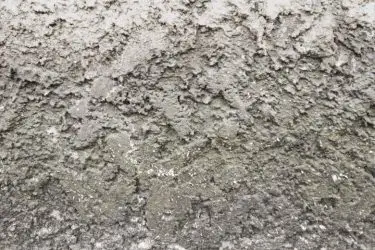We all have trees that are special to us, and when it comes time to do construction work it makes sense to worry if the new work can damage them.
Pouring concrete over a tree’s roots can cause the tree to suffocate since trees can’t pull the water and nutrients they need from concrete the way they can from soil. Cutting the roots out of the area you plan to pour in can also cause irreparable damage to the tree’s critical root structure.
What other options are there if you don’t want to kill the tree? A little knowledge of tree anatomy can help know where to place concrete to avoid harming your trees.

Table of Contents
What Is A Critical Root Structure?
Every tree has a structure of roots underneath the ground that is necessary for the tree’s survival. If these roots are damaged, the tree is likely to die. These are the roots that you want to plan on avoiding to keep your tree healthy.
There are two common ways to find the size of your critical root structure.
The Critical root structure roughly corresponds to your tree’s drip line in shape and size. The drip line is the farthest place from the tree trunk that water is dripping off the branches to the ground.
Another way is measuring the diameter of the tree’s trunk and then multiplying it by about twelve. This should give you a generous estimate of the size of the structure.
For some trees and in some parts of the country this may vary. For instance, the southern red oak’s critical root system can sometimes be up to twice the size of the tree’s drip line.
There’s also a difference between the tree’s critical root zone and the tree’s ordinary roots. For a large tree, roots can sometimes spread up to five times the size of the canopy.
All of these roots are important to the tree, but the tree isn’t likely to sustain nearly as much damage if only the distant roots are affected by something than if the critical roots are.
Tall & Narrow Trees
Actually, since narrower trees don’t have large canopies, you can find the size of their critical root structure using a slightly different formula.
In this case, the critical root system will extend for half of the tree’s height out from the tree’s center.
What If I Really Want To Pave Under My Tree?
If you want to keep the tree, don’t do it. If you pour concrete directly over the roots, they will die. This will cause considerable damage to that entire side of the tree.
Cutting the roots out before you pour won’t be any better, as not only will the tree need to regrow those roots somewhere inconvenient to it, but it will also have to deal with whatever diseases and parasites enter the tree through the exposed area of the cut.
However, if your tree’s roots are deep enough that they won’t be immersed in the concrete when you pour it, you might still be able to put in your pavement.
As long as the pavement doesn’t cover any more than half the distance from the tree’s drip line to its trunk, the tree shouldn’t sustain any permanent damage.
This all depends on what kind of tree you have. Some kinds of trees keep their roots extremely close to the surface, and it’s pretty unlikely that you’ll be able to find any space underneath these trees where there are no roots.
It’s always better to just avoid the tree’s root space entirely and pour somewhere else if that’s possible.
Preventing Roots From Growing Near Concrete
Luckily, there are some simple steps you can take to discourage your tree from growing in the direction of any concrete you’ve recently poured and causing damage.
Simply putting down a layer of sand or gravel will generally prevent the tree from sending its roots towards the surface, keeping both the tree and your nice new concrete safe.

Who Should I Call For More Answers?
If you’re worried that your next project could damage a tree, you should contact an arborist. Arborists are essentially tree doctors, and their entire job is to help keep trees healthy.
An arborist should be able to answer your questions better than a contractor or an internet columnist ever could.



